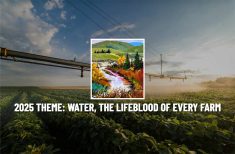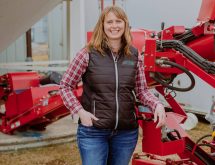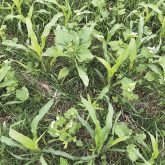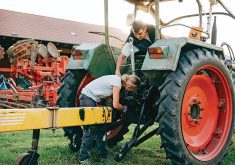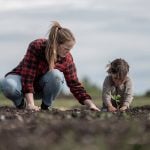Austin Noirot, 13, of Caroline, is the junior winner of this year’s Alberta Young Speakers for Agriculture competition. In his speech, he addressed the question: Is local food sustainable?
The topic of food sustainability has become increasingly popular lately, with many people putting their opinions out on social media and newspapers.
There seems to be much confusion now, though, as to what sustainability in agriculture and the definition of local food even are. So let’s examine whether food on the local level is sustainable.
Read Also
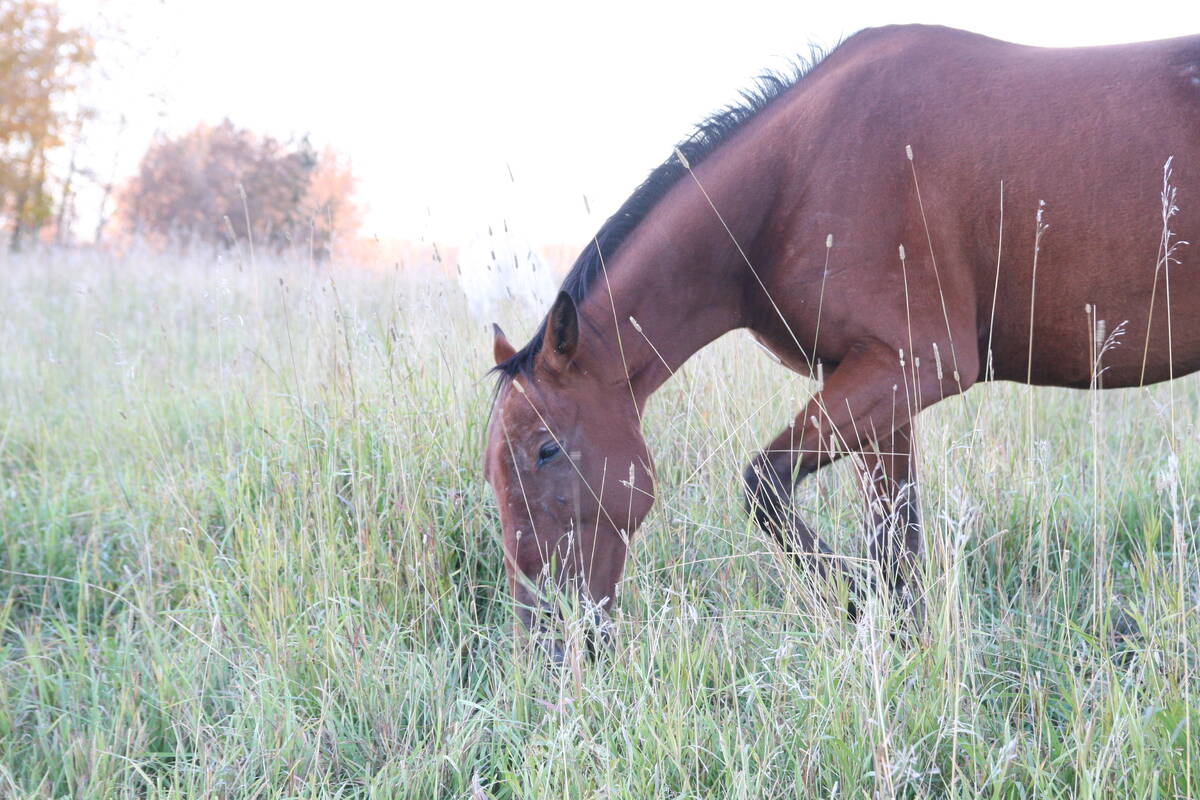
Beware giving horses too much iron
Horses consuming too much iron through diet or well water risk health problems like laminitis. Mineral testing forage and water is good practice for owners.
Before I do that, though, let’s have a look at what ‘sustainable agriculture’ and ‘local food’ are.
There is no textbook definition of sustainable agriculture. However, by society’s standard, it needs to be healthy for the soil, environment and economy. It also needs to be good for any animals involved and renew itself as much as possible.
Put simply, it is all the positive attributes agriculture can have.
[RELATED] Sustainability is a challenge that continues to evolve
Finally, it needs to turn a profit for the producer. This may seem irrelevant, but if the producer does not make any money from their operation, they will stop producing the food that feeds the world.
Now, let us quickly look at local food. This is a relative term, but let’s define it today as food that is purchased by a consumer directly from a producer local to them on a small scale. Now that we are all on the same page, let’s dive in a little further.
Let’s begin by looking at the soil and environment.
This is the most obvious part of food sustainability, as nothing can happen in the first place unless they are healthy. The soil can be affected in different ways, depending on whether you are raising animals or plants.
In the 1870s, all livestock were kept together in massive herds. When barbed wire was invented, ranchers were able to separate their livestock into designated pastures, thus resulting in the practice of rotational grazing and crop rotation.
Rotational grazing is a method in which ranchers, instead of just putting livestock into one big pasture, divide pastures into multiple smaller fields, and the animals are ‘rotated’ between them. They eat down and fertilize one, and are moved to the next one. This continues for the rest of the pastures, and by the time they make it back to the first one, the vegetation has grown back, better than before because of the added nutrients from the manure, and the process starts again.
An interesting thing about this is that it works much better on a smaller scale, because it is harder with larger numbers of livestock, without massive amounts of land.
Crop rotation is the rotation of crops on different plots of land. Each plot is assigned one of the four plant categories to be seeded. The next year, the crops are ‘rotated’ just as animals are on pasture. This is because each category uses up and gives different nutrients to the soil, so when they are rotated, the soil regains specific nutrients that the last crop took, and the new one uses nutrients that are still in the soil.
As I previously mentioned, for agriculture to be sustainable, it needs to put money into the local economy and be profitable for the producer.
The agriculture industry in Alberta employs over 75,000 people and contributed over $9 billion to the province’s economy in 2020. If that isn’t sustainable for the economy, I don’t know what is.
Let’s turn our attention to profits. Selling direct to the consumer can be divided into two categories: selling off the farm, which has been a popular and a more passive choice for more meat producers, and at a farmers market, which is the popular choice for smaller ranchers and for fruits and vegetables.
For a case study of meat sold off the farm, I will use my family’s beef operation.
We utilize both methods, off the farm and at the local farmers market. On average, we spend about $1,600 per animal, from weaning to freezer ready. We also choose to butcher at a local abattoir, which reduces food miles.
When the beef is sold, our gross income can be close to $4,000. If I was taught algebra properly, that is a 62 per cent profit (using last year’s 4-H record book data), which in my opinion is very profitable.
Now, I have left vegetables longer than Mom lets my little sister leave them on her plate, so let’s get to it.
Small vegetable producers primarily sell at the nearest farmers market. To find out a little bit about making profit producing vegetables, I had a chat with a local producer who sells at farmers markets only.
For him, it costs about $20 to plant 100 feet of carrots, his best sellers. His gross income is $225. After seed and other expenses are factored in, he makes a 75 per cent profit. Even zucchini (his worst seller) makes an 85 per cent profit. This means that small operation farming is very profitable.
Getting product to the consumer doesn’t just happen, though. You need to make sure you have a way to let the customer know where to find you. Most markets use social media to advertise themselves, so if you are a vendor, that advertising is done for you.
At a very rough estimate (as there is no way to get an exact count), 250 people pass through the Innisfail Farmers Market every week, and the vegetable, fruit, bakery and meat vendors usually sell over half of what they brought.
The final part of food sustainability is animal welfare.
Obviously, for an animal to do well, it needs food — as much of it as it wants. A benefit of small operations is that you can pick and choose your feed better than a large producer, who needs as much feed as he can get. Producers also try to graze as much as possible, as most animals, from cattle to chickens, naturally do better on grass. Even with that set aside, grass is far cheaper than purchased feed, so long as pasture rent is reasonable.
One of the quite important things on the topic of animal welfare is proper veterinary care.
Calling the vet out every time you suspect something could be wrong can cut into your profit margin, but in the end, making sure the animal is healthy is ethically more important. Besides, it also ensures that an ailment does not affect the flavour of the meat.
To summarize, if the producers I have spoken with continue the practices they use, and we educate future generations on how to do the same, then yes, I believe that local food can be sustainable.
Furthermore, reducing dependence on other provinces, let alone other countries, will solidify local food sustainability.
We as an industry also need to educate the consumer about the benefits of supporting their local producers, or farmers will not be able to continue producing the delicious food that we eat.



